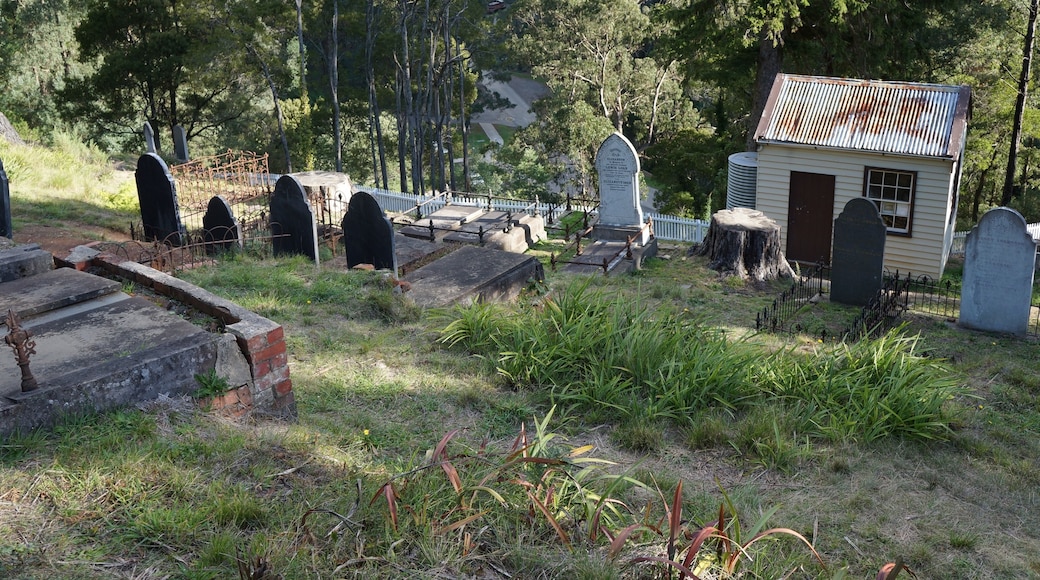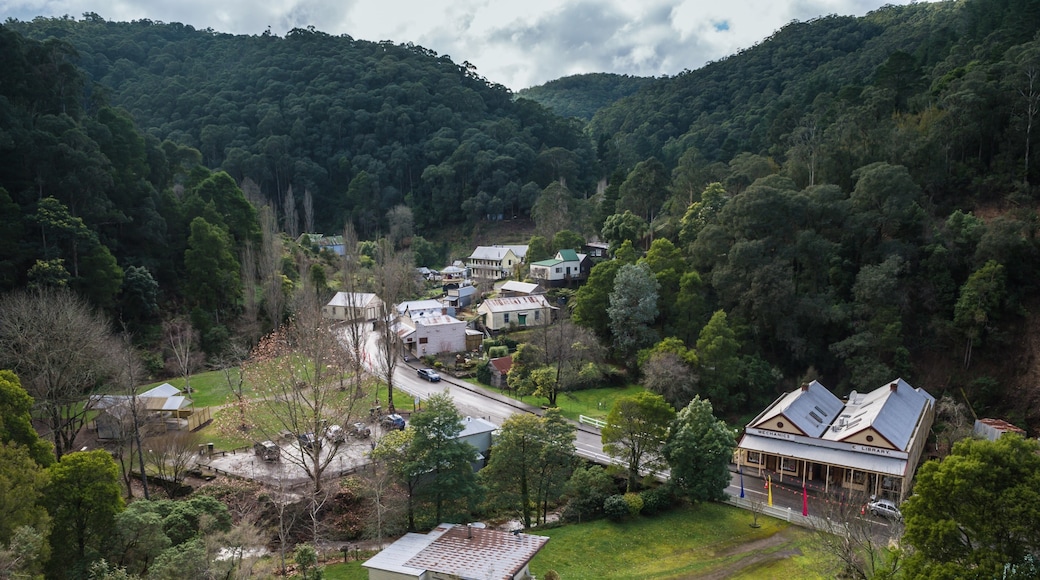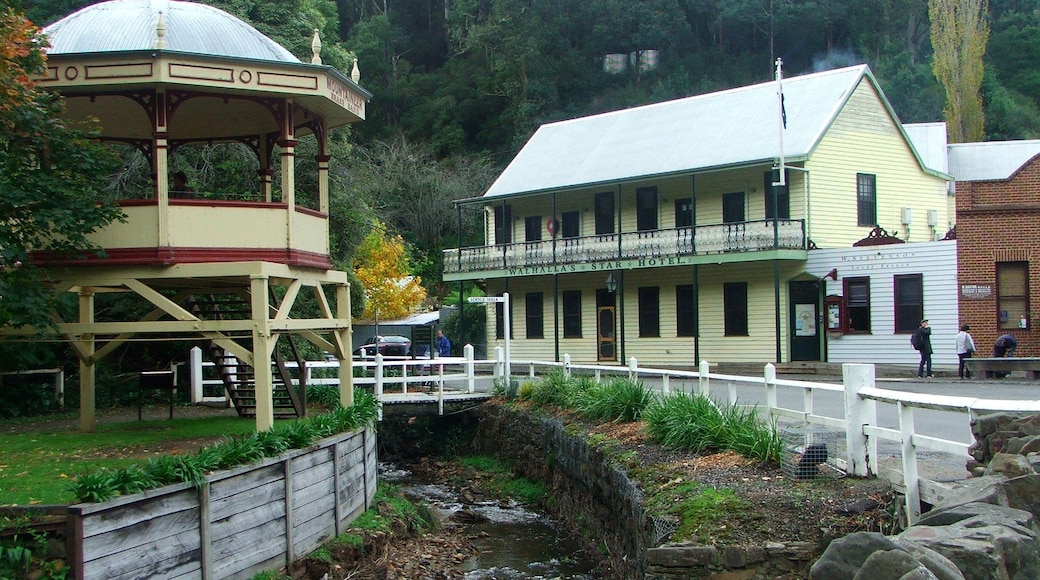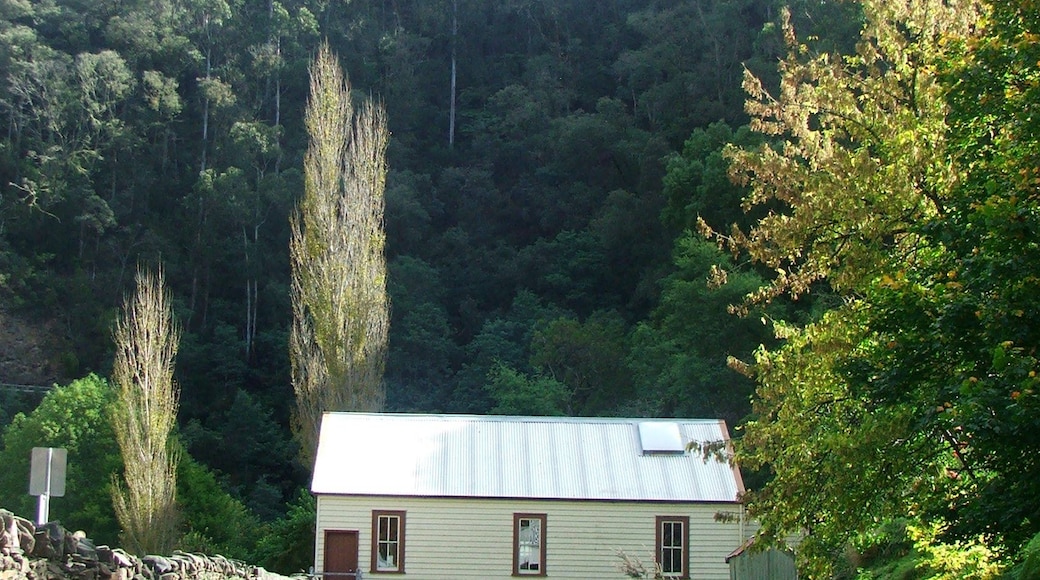Walk, cycle or ride railways through history and find out about this picturesque mountainside town in Gippsland, which was built on one of Victoria’s richest goldmines.
Once one of the wealthiest towns in Australia, Walhalla has a wild gold rush heritage that has been brought back to life in its fascinating town centre. Wander around the streets that were paved with the wealth of gold, explore skilfully restored buildings and admire 19th-century architecture. Discover the historic landscape via railways and walking trails, check out historic mineshafts or trek through the surrounding mountainside.
Walhalla’s phenomenal prosperity began in 1863 with the discovery of Cohen’s Reef, a 3-kilometre (1.9-mile) streak of gold that ran through the town. Walhalla’s population swelled to over 4,000 and a thriving town was built. A good way to discover the town’s history is on the Walhalla Heritage Walk. Grab a Walhalla Visitor Map for free in the town and visit over 30 historic sites. For a spookier take on Walhalla’s history, join a ghost tour to the town’s old cemetery.
Visit Stringers Creek and try your luck at panning for gold. Take a return trip on the historic Walhalla Goldfields Railway and see stunning native forest and summer wildflowers around the Stingers Creek Gorge and the Thomson River. Take an underground tour of the Long Tunnel Extended Gold Mine and explore the surrounding area with the Walhalla Tramline Walk. A network of walking tracks built on the old tramway lead past native flora, gentle hills, historic mines and stunning outlooks over the town.
Grab a bike and set off for the Walhalla Goldfields Rail Trail. Spanning 7 kilometres (4.3 miles), this trail marks part of the historic route of the railway that once ran between Moe and Walhalla. Beginning in Erica and finishing at Thomson Station, the trail winds through lush forests and past the Thomson River.
Walhalla is 2.5-hours’ drive from Melbourne and 30 minutes’ drive north of the Latrobe Valley. The nearest V/Line regional railway station is in Traralgon, 45.7 kilometres (28.4 miles) to the south. Stay in heritage hotels or experience the region’s State Forest and North Gardens camping areas. Discover a wild landscape of rugged mountains, rivers and native forests in nearby Baw Baw National Park, a magnificent natural area that transforms into Melbourne’s nearest alpine resort in the winter.







